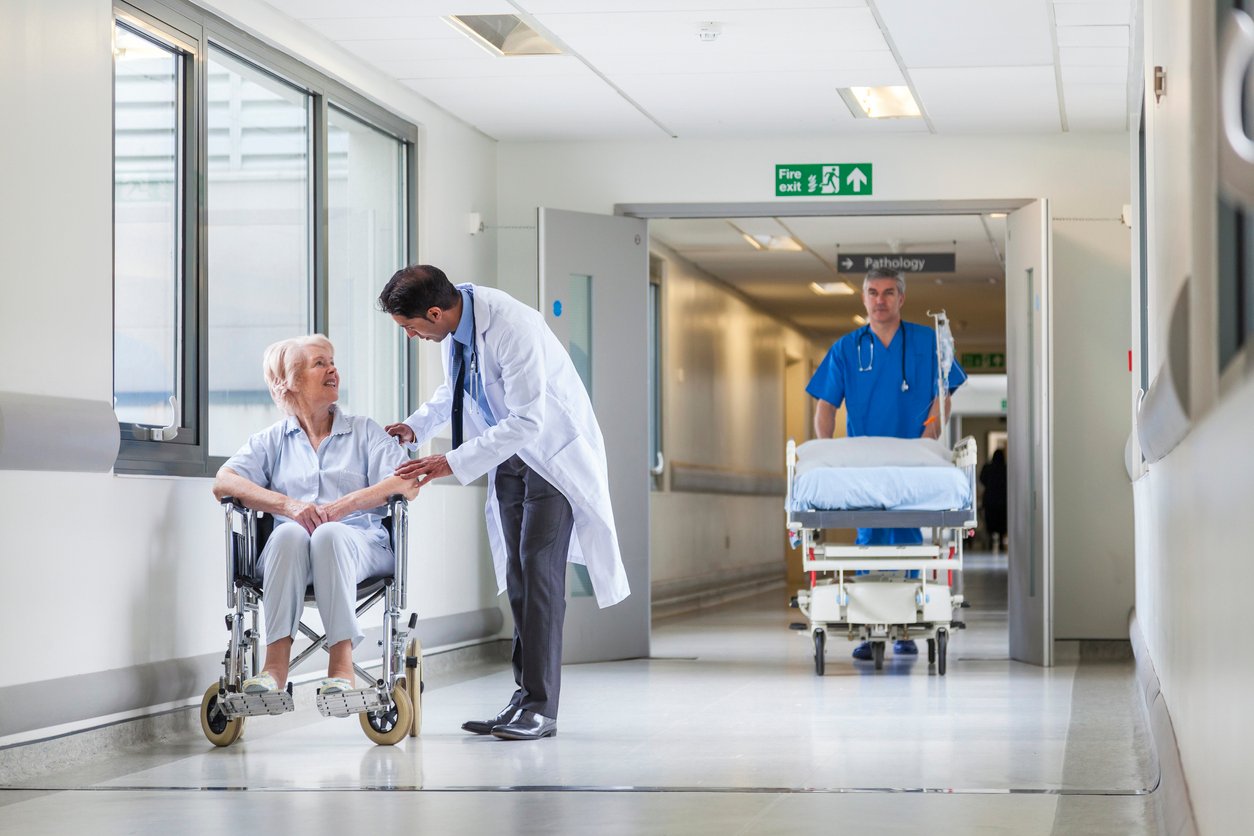Now is a better time than ever to review the different ways your healthcare facility can minimize and prevent patient falls. Using the appropriate equipment to lift, move, or transport patients not only minimizes falls, but it also mitigates staff injuries and provides a safe environment for all. Reducing caregivers’ injuries is especially important right now since the COVID-19 pandemic has left many healthcare facilities short-staffed. No one wants to lose a caregiver to a work-related injury.
Lifting a Patient
There are numerous patient lifts in the marketplace, and they fall into three distinct categories:
- Portable Patient Lifts are freestanding moveable lifts on wheeled bases. They assist in smooth, gentle transfers from beds, baths, mobility devices, and transport vehicles. They can be hydraulic, electronic, or manually powered.
- Ceiling Lift Systems are motorized devices that lift and transfer a person from point to point along an overhead track.
- Stand Assist Lifts are used to transfer a patient between seated surfaces. Unlike a Full-Body Lift, a Stand Assist Lift raises the patient to a partial or full standing position. This type of lift is ideal for transfers to a commode, bed, or chair. They can be powered or hydraulic.
Manufacturers for these various products include Guldmann, ArjoHuntleigh, Joerns, Drive, Lumex and Wy’East Medical. Guldmann has been innovating ceiling lifts for 40 years and has several choices of ceiling systems, depending on the size of the room and the requirements. Wy’East developed a unique safety platform walker called The Whitney that has a powered stand assist and can also aid in early mobility initiatives.
Moving a Patient
Repositioning or moving a patient from a stretcher to a bed can be done with a variety of lateral transfer products. They include:
- Slide tubes or transfer boards allow you to slide the patient easily or reposition a patient when needed. Slide tubes can be single use or reusable.
- Air-assisted lateral transfer mattresses offer a significant reduction in the strength required to laterally transfer and reposition patients, making it a much safer alternative for caregivers.
- Many patient lift manufacturers also offer transfer equipment. Bridge Healthcare exclusively focuses on safe patient transfer and offers a complete solution.
Transporting a Patient
Patients are transported all over healthcare facilities for a variety of reasons. There are a variety of methods based on the condition of the patient. Here are three categories of patient transportation:
-
Stretchers or gurneys are familiar to everyone. They come in a variety of shapes, sizes, and functionalities. Manufacturers include Gendron and Pedigo. Pedigo offers The Guardian line, which has the option of side rails made from bactericidal copper alloy to help combat infections.
-
Wheelchairs are the most common form of patient transfer. There are many manufacturers in this space including Drive, Invacare and Staxi. Staxi constructs a unique product line that combines safety, security, ease-of-use, and an enhanced experience for the patient.
-
Multi-purpose treatment/stretcher/chair transfer units eliminate patient transfers and offer enhanced safety for both patients and staff. Manufacturers include Hausted, Transmotion by Winco, and Wy’East Medical. Wy’East’s distinctive TotaLift Transfer Chair is a popular choice in this segment.
Using the right equipment for lifting, moving, and transporting patients in a healthcare setting eliminates falls and promotes safety and convenience for both the staff and the patient. For more information on our wide selection of ambulatory equipment, contact your local Account Manager at CME Corp or reach out to us by visiting our website.
About CME: CME Corp is the nation’s premier source for healthcare equipment, turnkey logistics, and biomedical services, representing 2 million+ products from more than 2,000 manufacturers.
With two corporate offices and 35+ service centers, our mission is to help healthcare facilities nationwide reduce the cost of the equipment they purchase, make their equipment specification, delivery, installation, and maintenance processes more efficient, and help them seamlessly launch, renovate and expand on schedule.


.png?height=100&name=Cindy%20Headshot%20(2).png)
